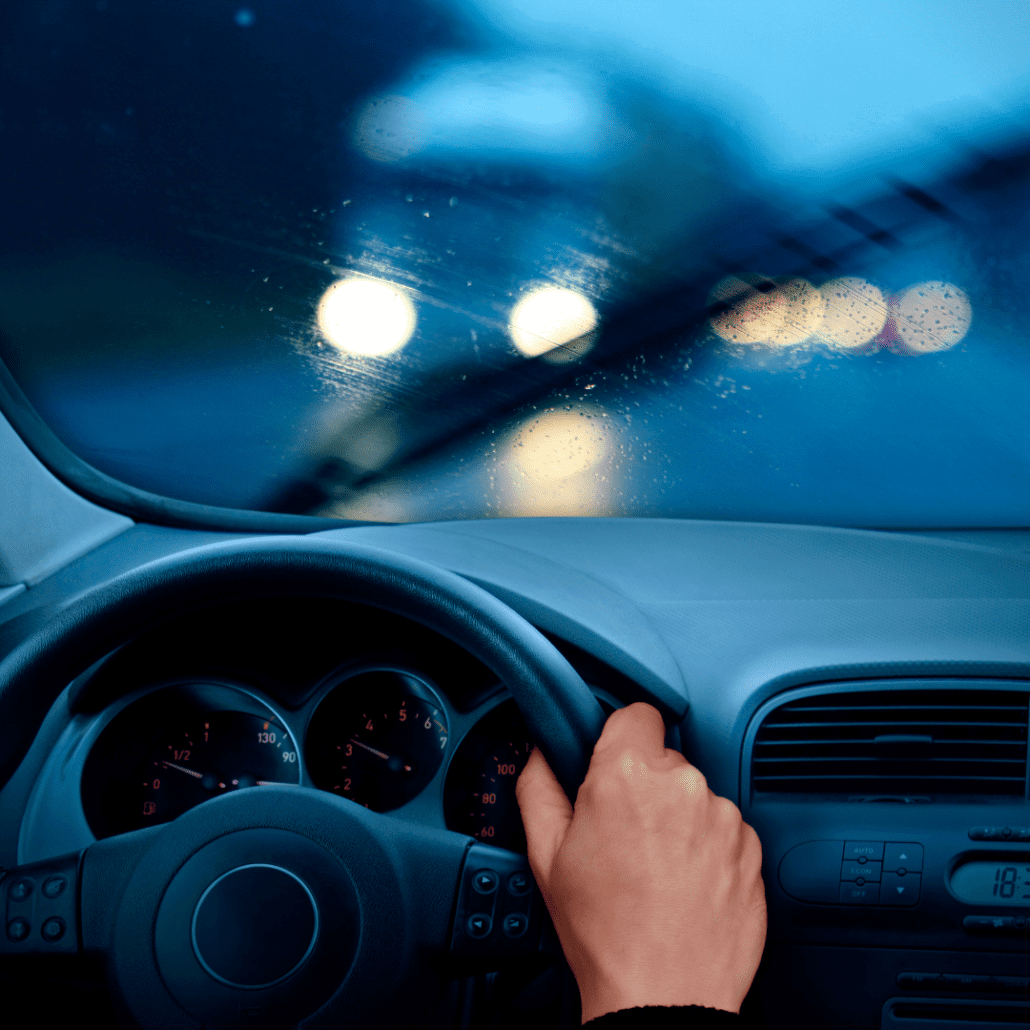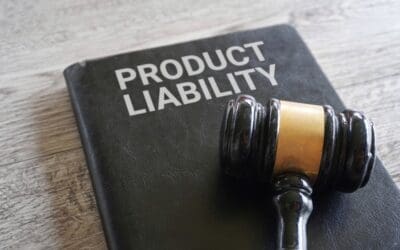When Mother Nature unleashes her wrath on the roadways, you’ll find yourself maneuvering more than just difficult driving conditions. Whether you’re dealing with rain, snow, fog, or ice, weather conditions car accident claims play a pivotal role. You’ll need to understand both your responsibilities as a driver and the complex factors that influence liability determination in weather-related crashes. What might seem like a straightforward incident can quickly become complicated when weather conditions enter the legal equation.
Common Weather Conditions That Lead to Accidents

Various weather conditions pose significant risks for drivers and frequently contribute to vehicle accidents throughout the year. Rain presents a dual hazard by reducing road traction issues and compromising visibility, accounting for 70% of weather-related crashes on wet pavement.
You’ll encounter particularly dangerous situations during snowfall and icy conditions, which are responsible for 17% of weather-influenced accidents and often result in multi-vehicle collisions.
Fog creates severe visibility reduction challenges, with data showing that 43% of fog-related incidents occur during the winter months from November to January. Strong winds pose unique risks, particularly for high-profile vehicles, increasing the likelihood of rollovers.
Together, these adverse weather conditions contribute to approximately 21% of all vehicle crashes annually, highlighting the significant impact weather has on road safety.
Legal Standards for Weather-Related Accidents
Exceeding the patterns of weather-related accidents, legal standards govern how courts and insurance companies determine liability in these cases. When evaluating driver precautions, they’ll consider whether you’ve met your duty of care by adjusting your driving behavior to match current conditions.
The principle of comparative negligence plays a pivotal role when assessing road conditions and driver responses. If you’re found to have violated traffic laws during adverse weather, you may face negligence per se charges, drastically increasing your liability. You’ll need to demonstrate that you took reasonable precautions given the circumstances.
To protect your interests, it’s crucial to document weather conditions thoroughly at the accident scene. This includes gathering photos, witness statements, and weather reports, as these elements will directly impact how courts assess fault and determine compensation.
Documenting Weather Evidence After a Crash
When documenting weather conditions after a car accident, collecting detailed evidence becomes critical for establishing liability and supporting your insurance claim. Police reports serve as an official record, but you’ll need additional documentation to build a strong case.
Key steps for gathering extensive weather evidence:
- Take photos and videos that capture precipitation levels, road conditions, and reduced visibility while at the scene
- Obtain traffic camera footage from nearby intersections to verify weather conditions at the time of impact
- Collect witness statements describing specific weather factors that contributed to the accident
This thorough documentation helps protect your interests when insurance companies attempt to deflect responsibility by blaming adverse weather rather than driver negligence. Remember to record temperature, wind conditions, and other environmental factors that could have influenced the accident’s circumstances.
Insurance Coverage for Weather-Related Claims
Understanding your insurance coverage for weather-related accidents can make the difference between receiving full compensation or facing essential out-of-pocket expenses. You’ll need to carefully review your policy’s terms, as weather incidents often carry specific deductibles and policy exclusions that can affect your claim’s outcome.

Comprehensive coverage is pivotal in mitigating weather risks and protecting you against damage from hail, flooding, and fallen debris. When filing a weather-related claim, you must thoroughly document the conditions during the incident. This may include weather reports, photographs, and witness statements.
If disputes arise regarding the weather’s role in your accident, you might require expert analysis to support your claim. Consider consulting legal representation to navigate complex cases where weather conditions noticeably impact liability determination and potential compensation.
Driver Responsibilities During Adverse Weather
Safe navigation through adverse weather requires drivers to fulfill multiple legal and practical responsibilities. You must implement weather-related precautions by adjusting your driving behavior to match current conditions. This includes reducing speed, increasing following distance, and using appropriate lighting systems.
To minimize weather-induced distractions and maintain vehicle control, you’re legally required to:
- Decrease speed and maintain greater separation on snow or ice-covered roads
- Activate headlights during rain or fog while avoiding sudden maneuvers
- Apply firm steering control and heightened awareness during strong winds
Failure to take reasonable precautions in adverse conditions can constitute negligence if an accident occurs. The law expects you to demonstrate enhanced caution and implement appropriate safety measures to prevent weather-related collisions, protecting yourself and others on the road.
Determining Fault in Weather-Related Collisions
The complexities of determining fault in weather-related collisions stretch far exceed standard accident investigations. When establishing responsibility between the parties involved, you’ll need to consider multiple factors, including hydroplaning hazards and icy road conditions.
Insurance adjusters will evaluate whether you’ve taken appropriate precautions and maintained your duty of care during adverse weather. If you’ve violated traffic laws, you may be found negligent per se, regardless of weather conditions.
Comparative fault principles determine each party’s liability percentage when multiple drivers share responsibility.
You’ll need extensive documentation to support your claim, including detailed weather reports, witness statements, and accident scene evidence. Legal professionals rely on this evidence to navigate the intricate fault determination process, ensuring a fair liability assessment in weather-related accidents.
Weather Impact on Vehicle Performance and Safety
Exceeding fault determination and adverse weather conditions directly affect your vehicle’s operational capabilities and safety systems. You’ll experience reduced traction levels on wet pavement, which accounts for 70% of weather-related crashes, while decreased vehicle stability becomes particularly concerning during strong winds and heavy precipitation.
Consider these critical weather impacts on your vehicle:
- Rain and snow dramatically diminish your stopping distance and maneuverability, contributing to 63% of weather-related collisions
- Dense fog reduces visibility to less than quarter-mile ranges, increasing your risk of rear-end and sideswipe accidents
- High winds compromise vehicle stability, especially in larger vehicles, amplifying rollover risks and potential impacts from airborne debris
Additionally, hailstorms can inflict substantial damage to your vehicle’s exterior, requiring thorough assessment during claims processing.
Gathering Expert Testimony for Weather Cases
Expert testimony is pivotal in substantiating weather-related accident claims, requiring you to engage qualified meteorologists, accident reconstructionists, and vehicle fluid specialists. You’ll need to guarantee these experts can provide detailed analyses of weather conditions at the exact time and location of the incident.

When building your case, you’ll want to combine meteorologist eyewitness accounts with scientific data from weather stations and radar systems. This evidence strengthens your position by establishing precise atmospheric conditions that contributed to the accident. Accident reconstruction analysis becomes particularly valuable when experts demonstrate how specific weather factors affect vehicle dynamics and driver response times.
You should also seek experts who can effectively communicate complex weather-related concepts to insurance adjusters and court officials, making technical information accessible and persuasive for your claim.
Comparative Negligence in Weather Accidents
Building upon expert testimony, understanding comparative negligence becomes a central focus in weather-related accident claims. Under weather-related duty of care standards, you’ll face assessment, where your actions are measured against what a reasonable driver would do in similar conditions.
Comparative negligence thresholds play an essential role in determining your potential compensation. Here’s how fault is typically evaluated:
- Your adaptation to weather conditions, including speed adjustments and following distance
- Your compliance with traffic laws during adverse weather
- Your preventive actions, such as maintaining proper equipment for weather conditions
Insurance adjusters will analyze these factors to assign a percentage-based fault when you’re involved in a weather-related accident. If you’ve violated traffic laws during bad weather, you’ll likely face higher liability under negligence per se principles, potentially reducing your recoverable damages.
Best Practices for Weather-Related Claims
Implementing proper documentation and response protocols from the outset is crucial to maximize your chances of a successful weather-related accident claim. Take comprehensive photos and videos of the scene, weather conditions, and vehicle damage while gathering detailed witness statements.
Maintain records of your proactive risk assessment measures, including ideal tire selection and vehicle maintenance history.
Secure meteorological data from reliable sources to substantiate weather conditions during the incident. You must demonstrate that you exercised reasonable caution through appropriate speed adjustments and following distance. When filing your claim, clearly outline how weather factors contributed to the accident while documenting your preventive actions.
Consider engaging legal representation to navigate complex liability issues and guarantee a thorough comparative negligence analysis between all parties involved.
How to Protect Your Rights in Weather-Related Accident Claims
Weather-related accident claims illuminate the delicate balance between Mother Nature’s challenges and your legal obligations as a driver. Navigating these claims successfully requires meticulous documentation, expert analysis, and a strong understanding of liability laws. Ensuring you take the right steps immediately after an accident—such as gathering weather-related evidence and securing professional legal guidance—can make a significant difference in your case.
If you’re facing disputes over fault or struggling with insurance negotiations, seeking legal counsel is essential. At Calandro Law, we specialize in handling complex accident claims, including those influenced by adverse weather conditions. Our team is committed to ensuring you receive the compensation you deserve, holding negligent parties accountable, and protecting your legal rights.
Don’t let weather complications derail your claim. Contact Calandro Law today for a consultation, and let us confidently guide you through the legal process.



